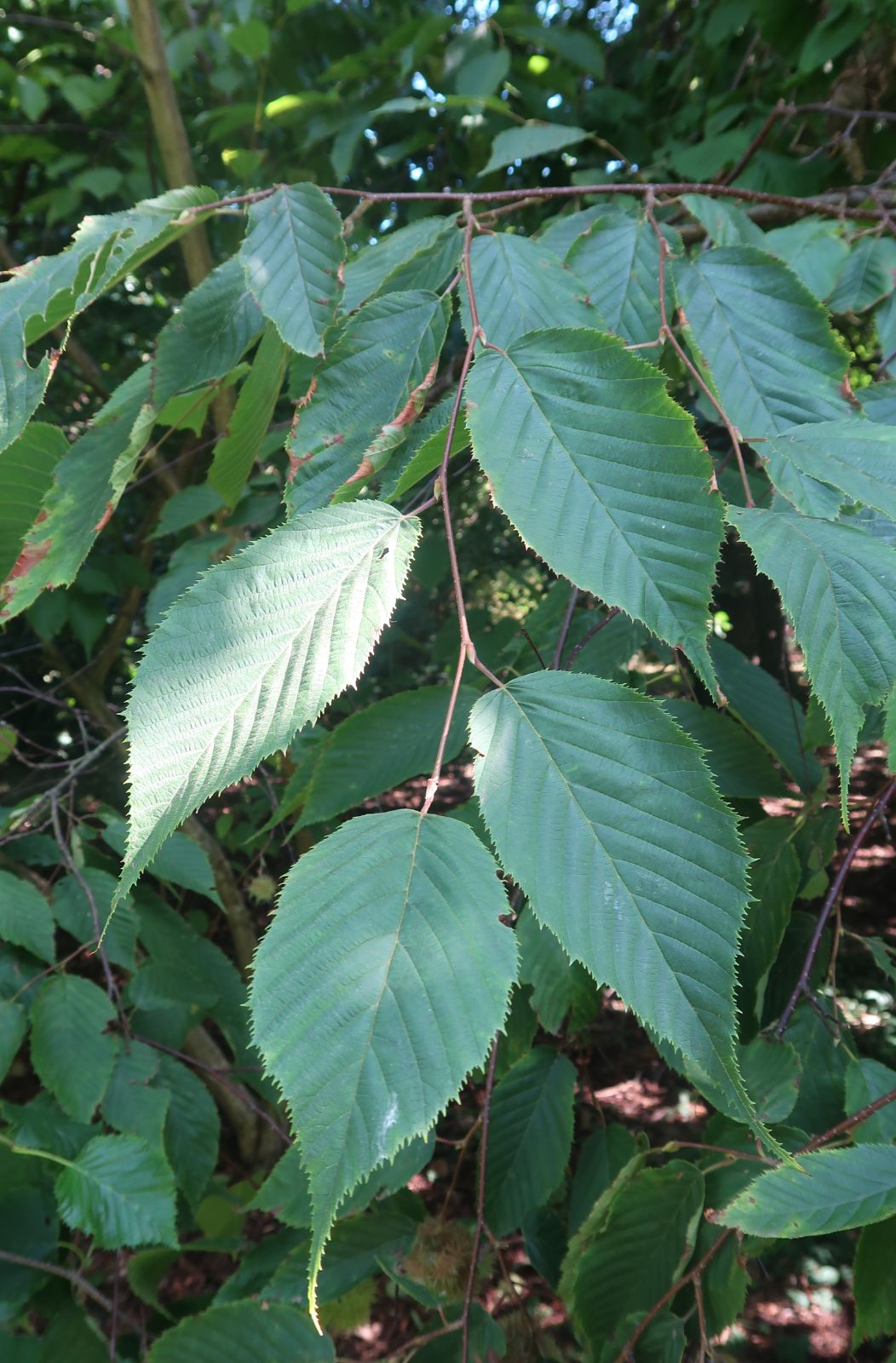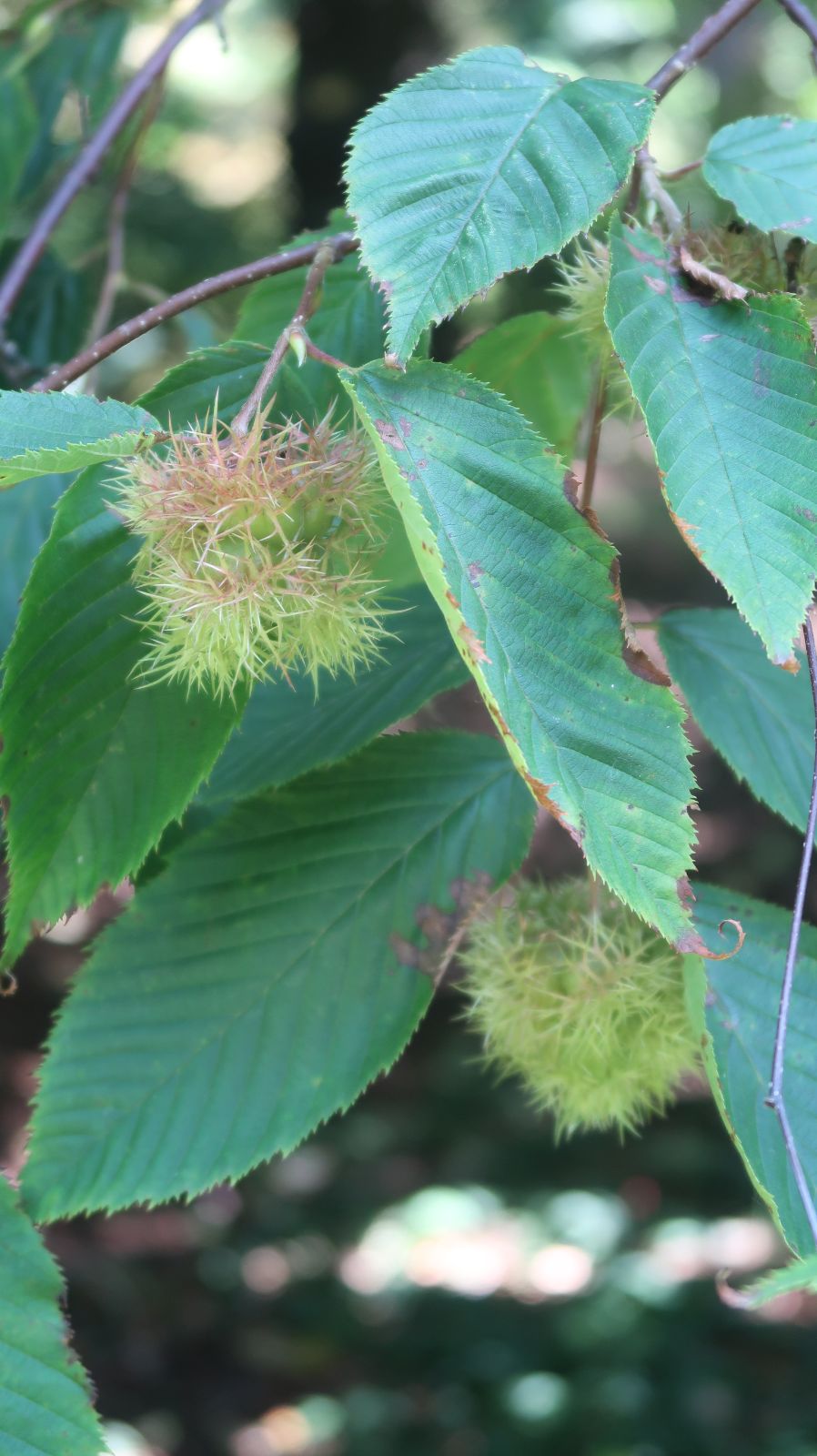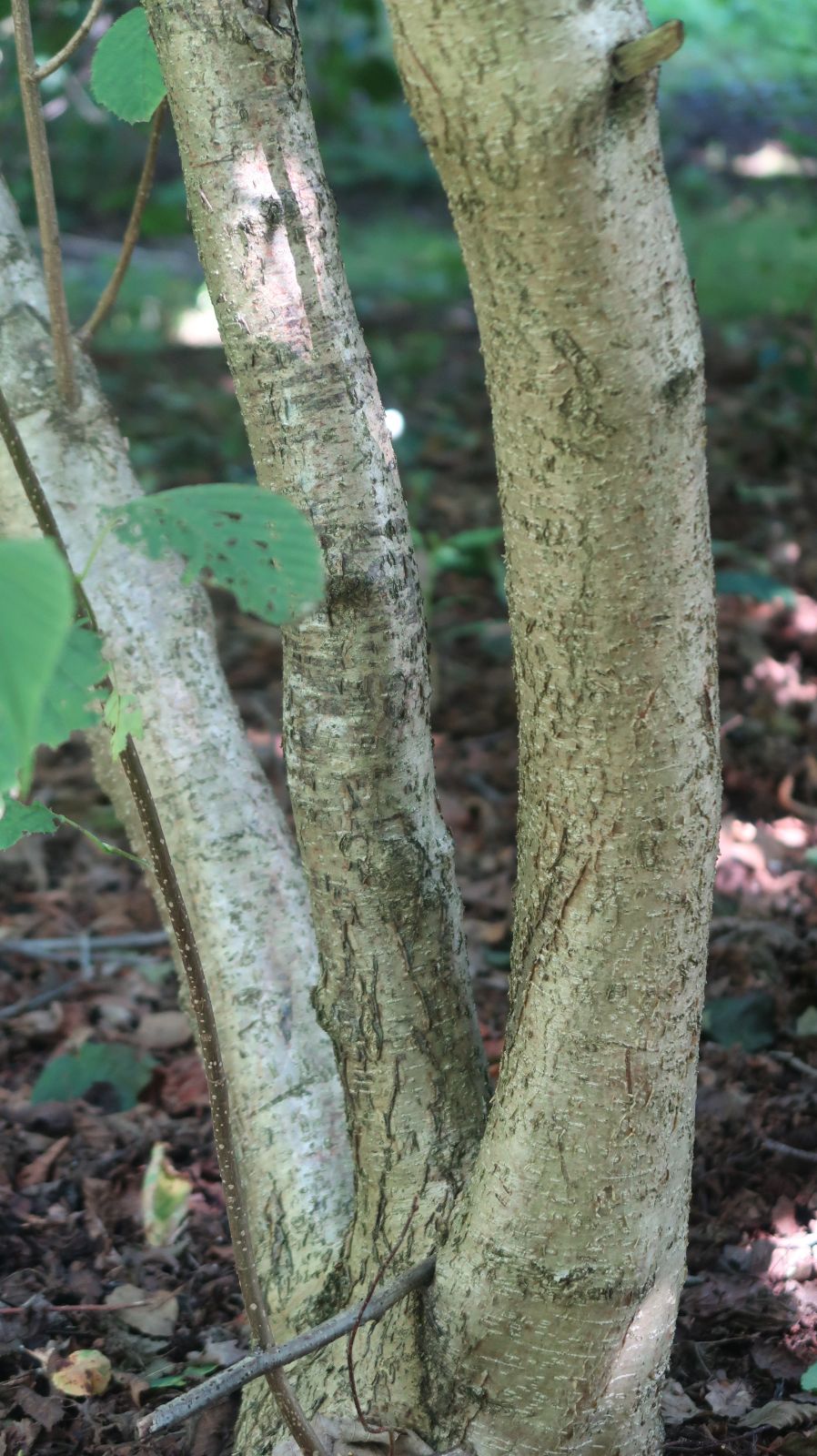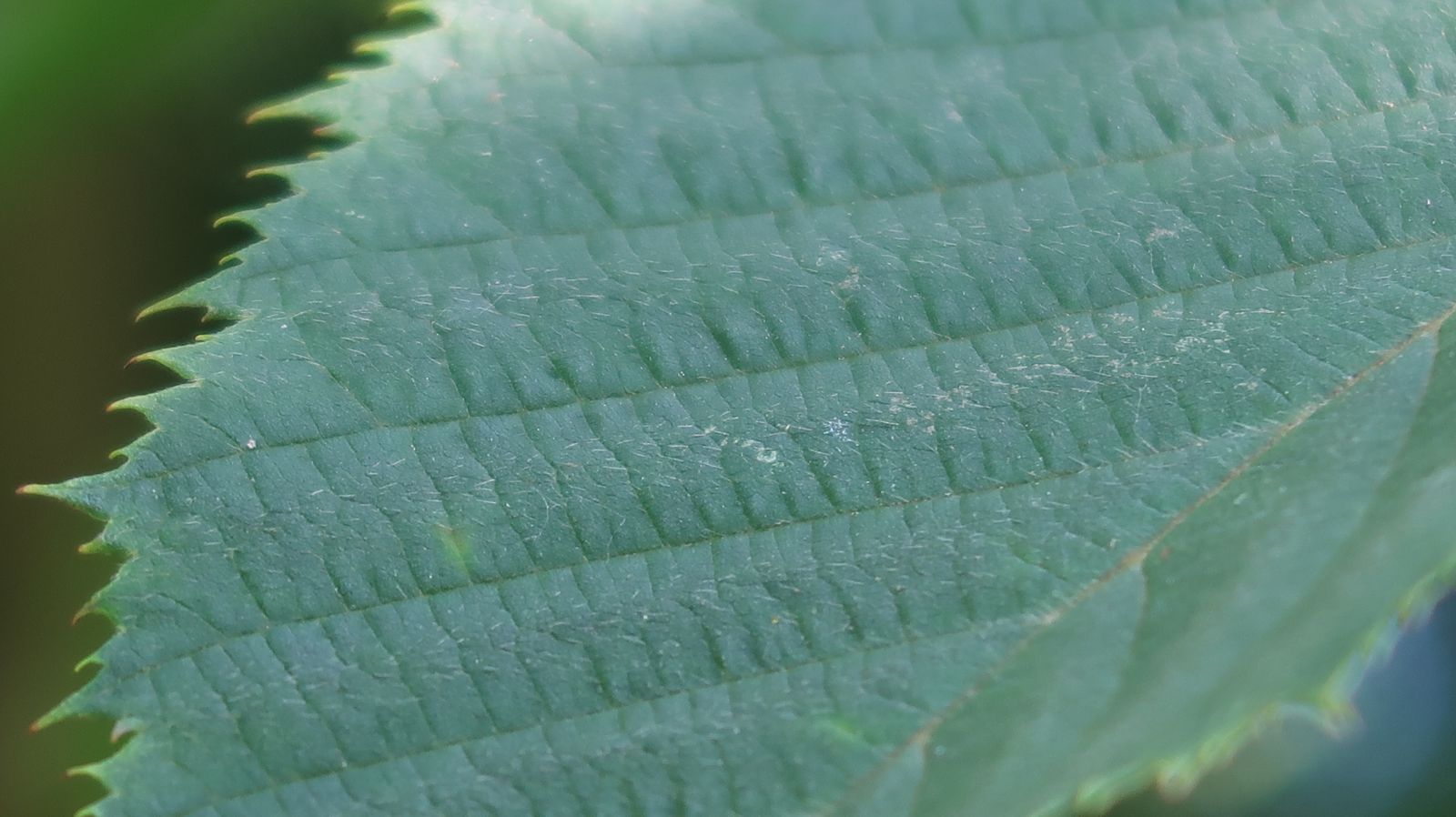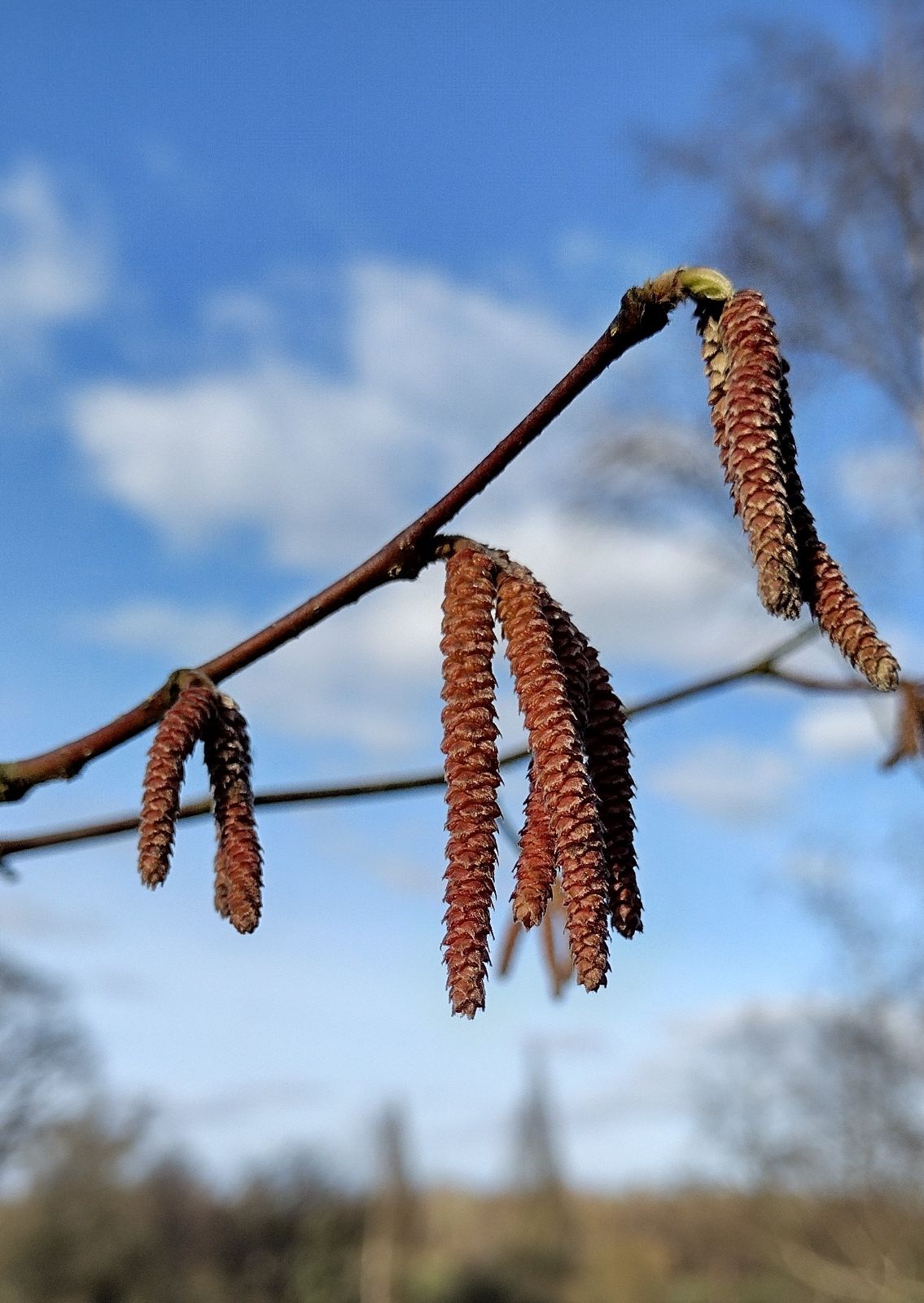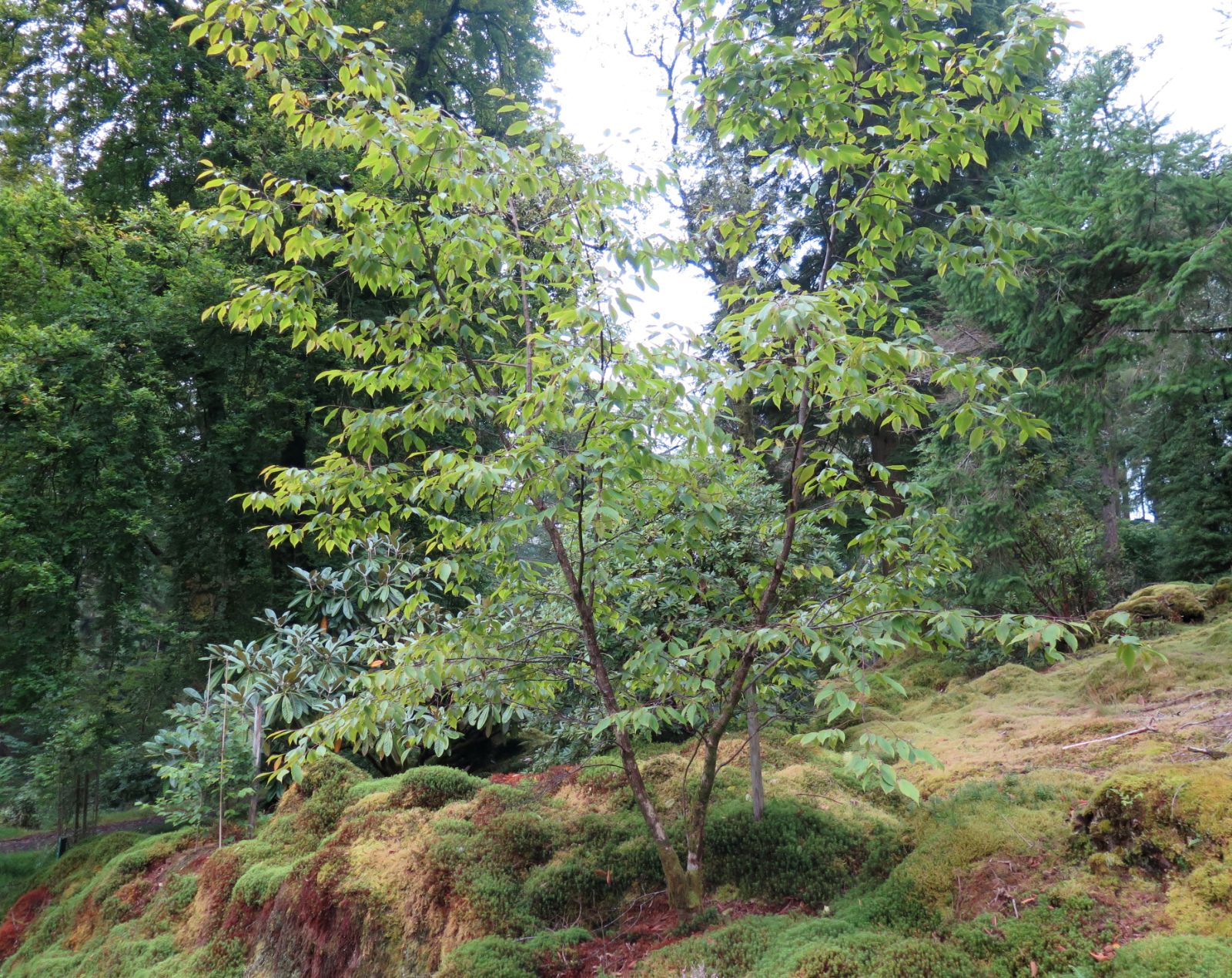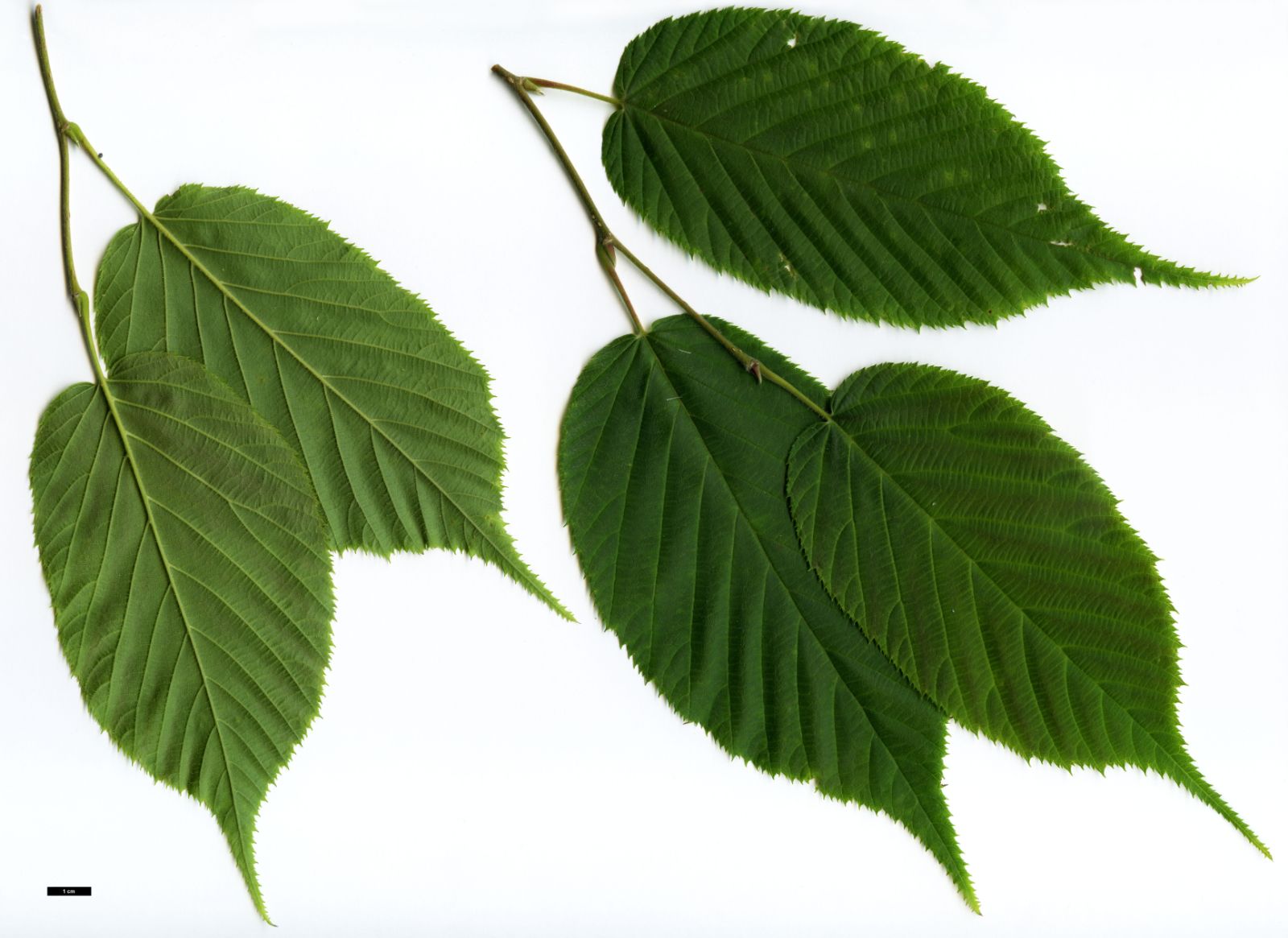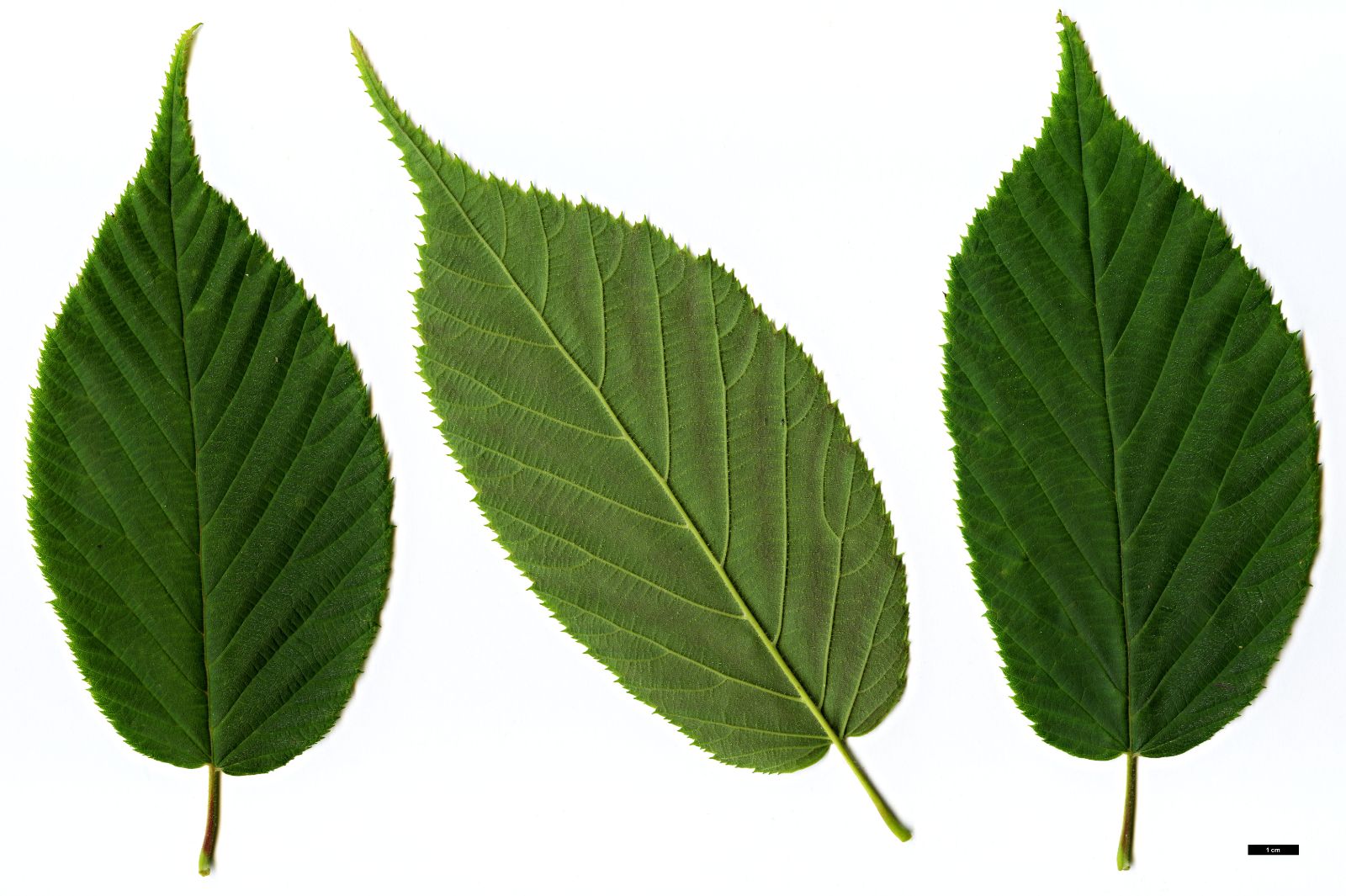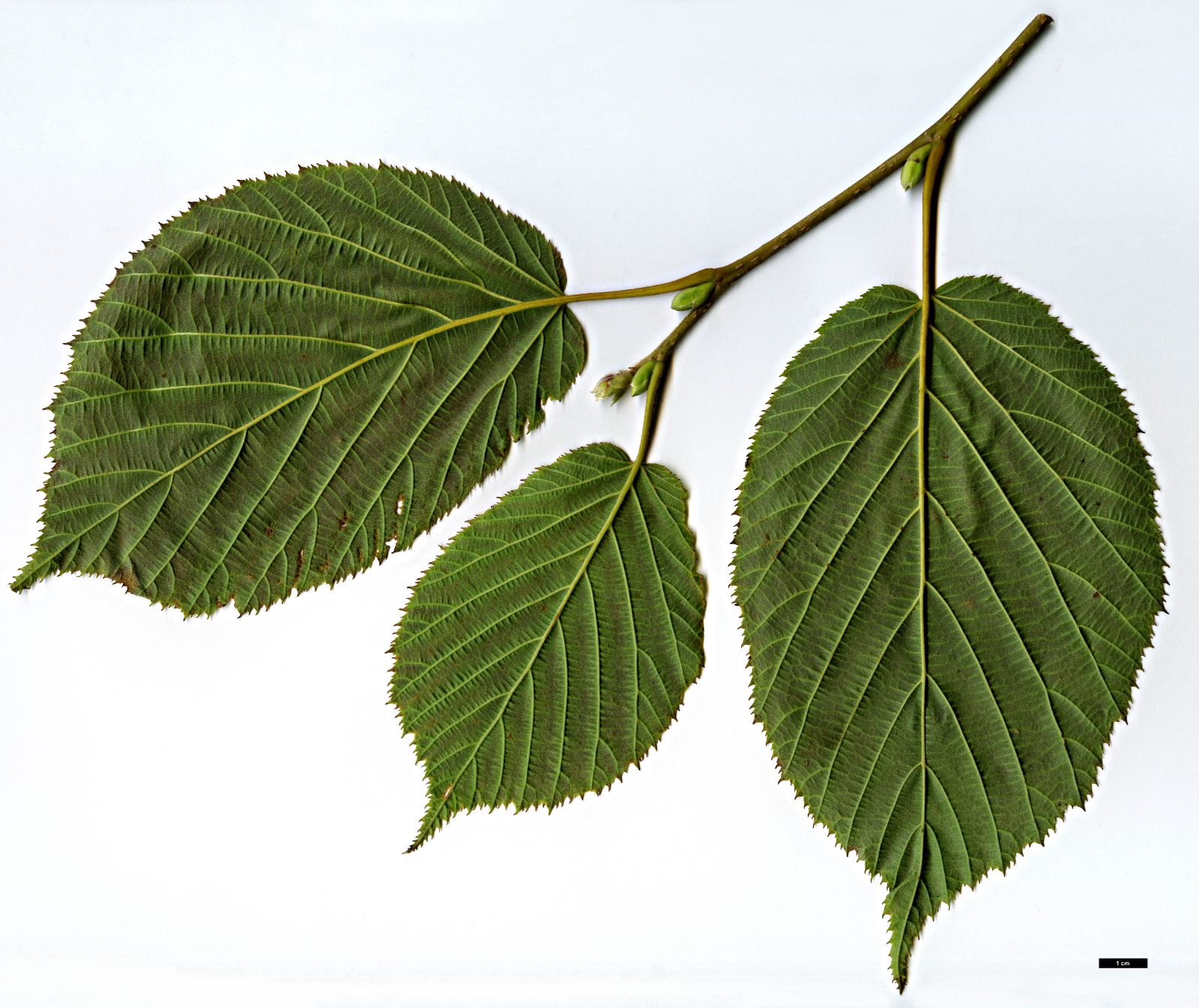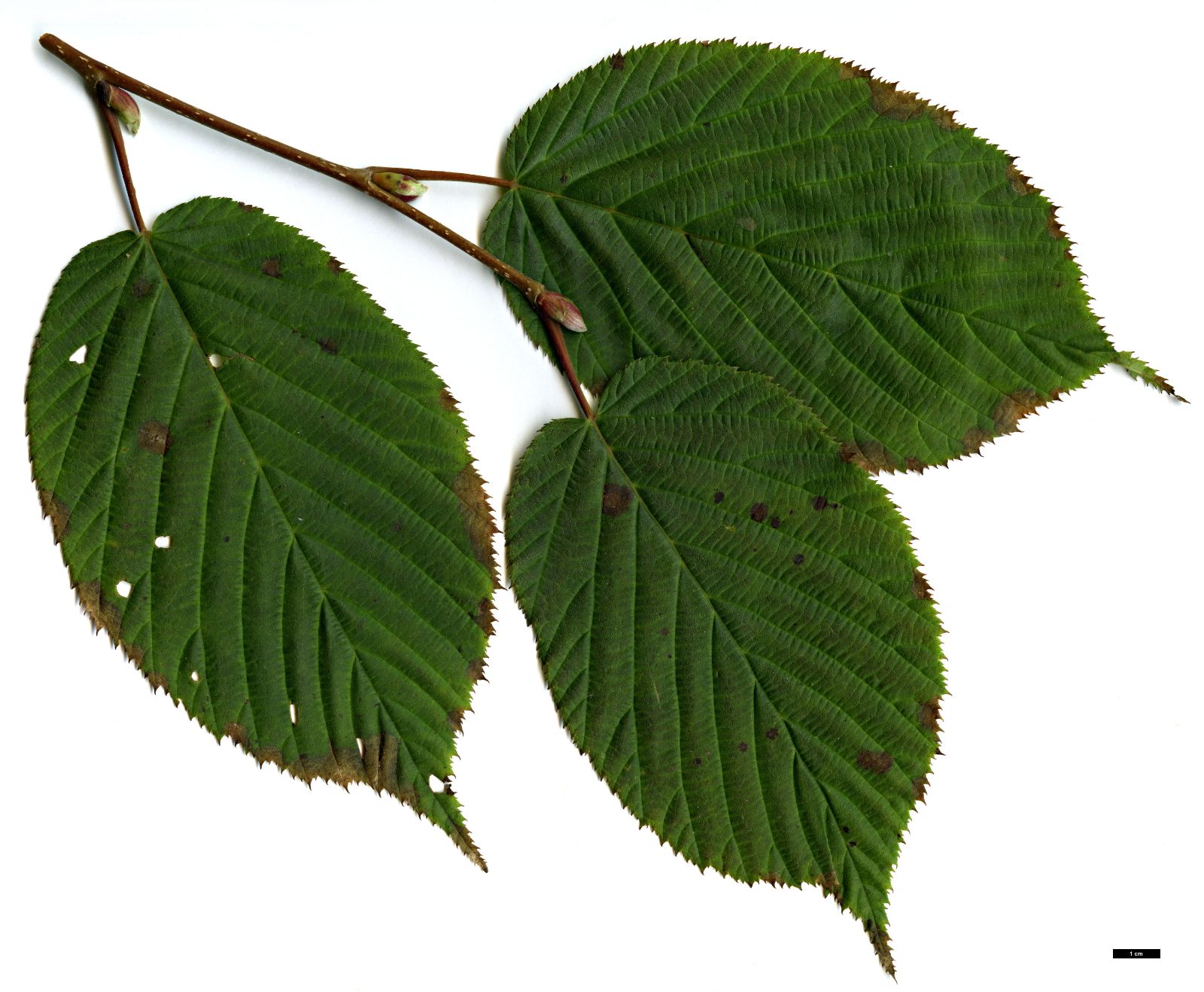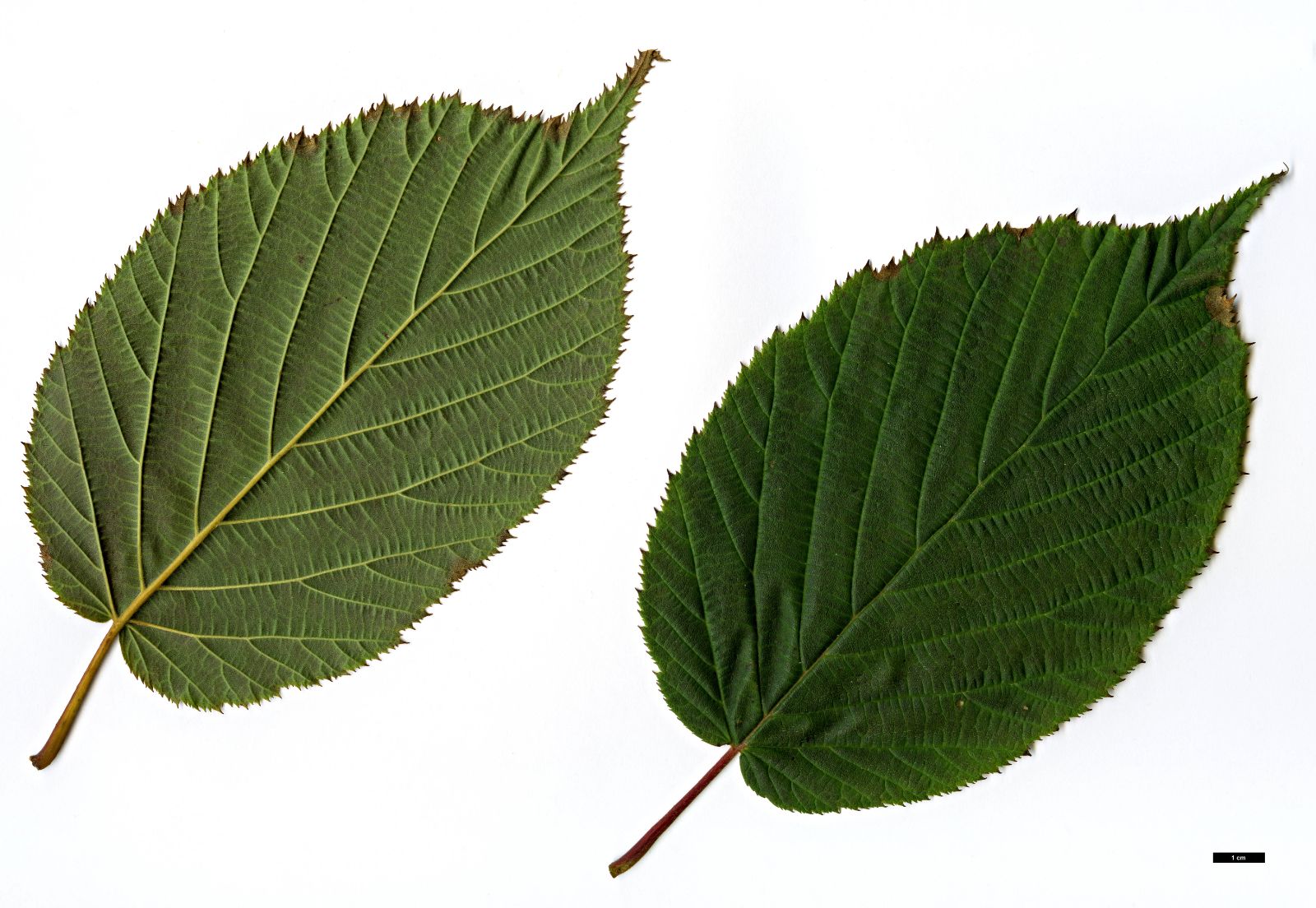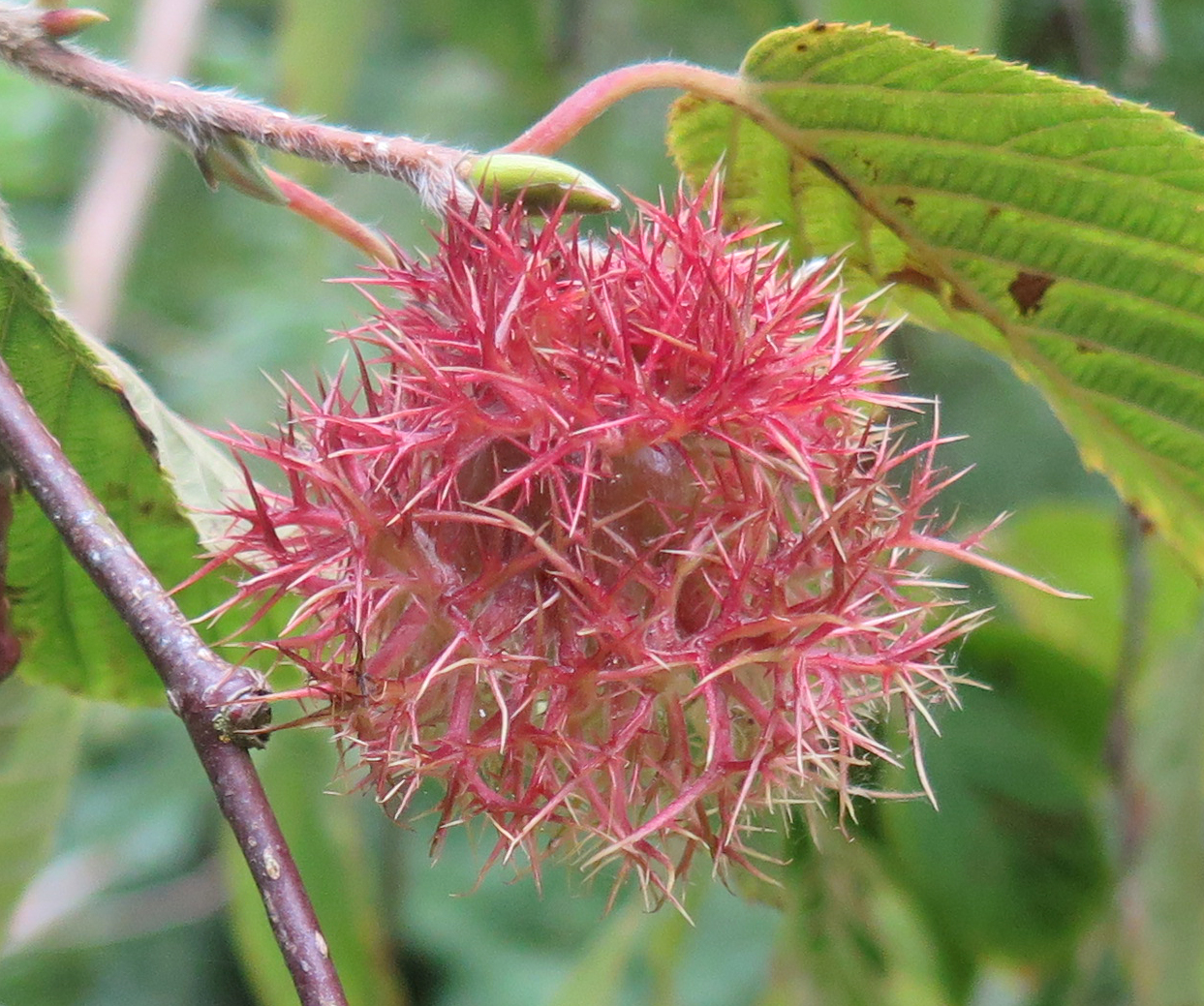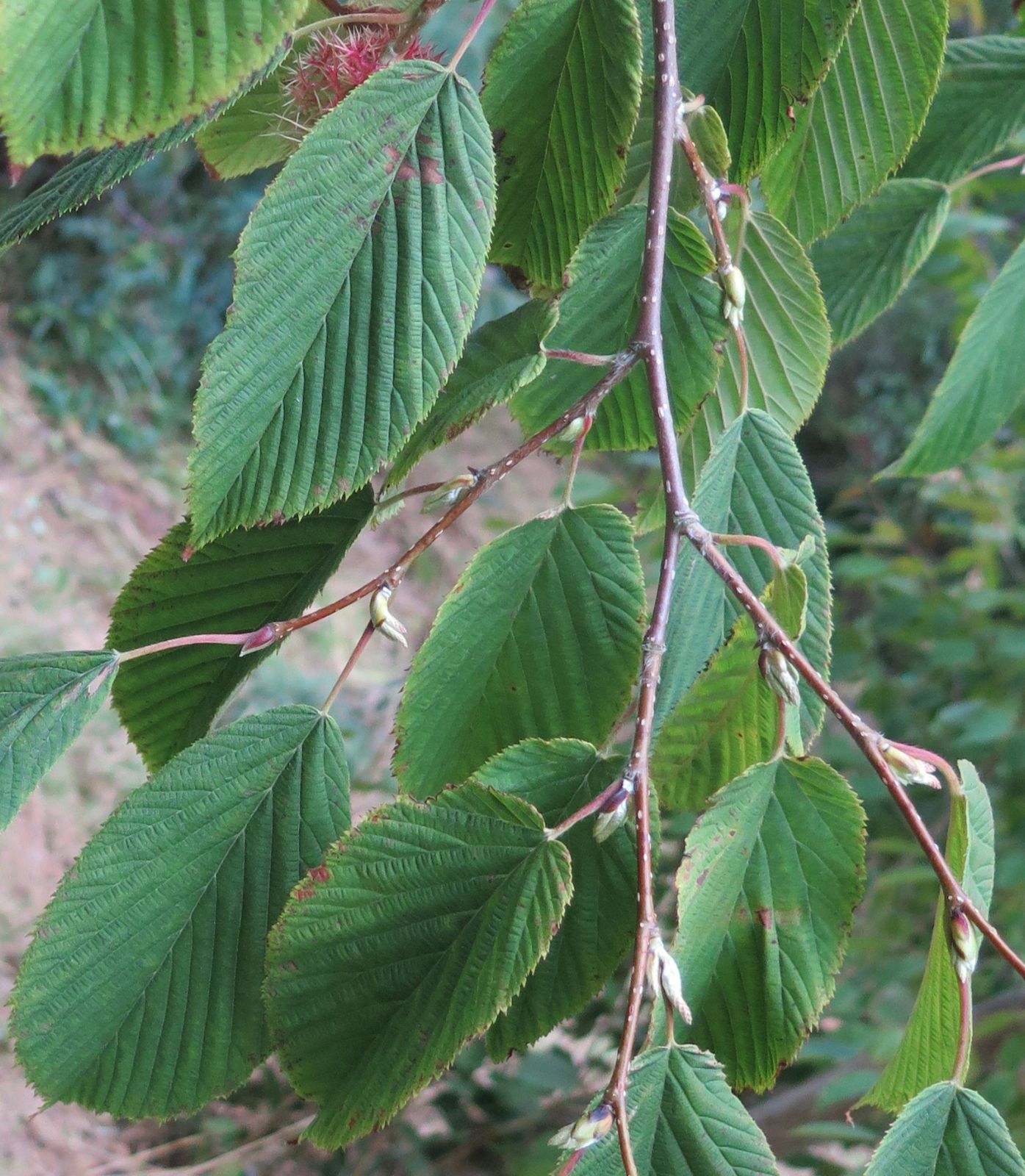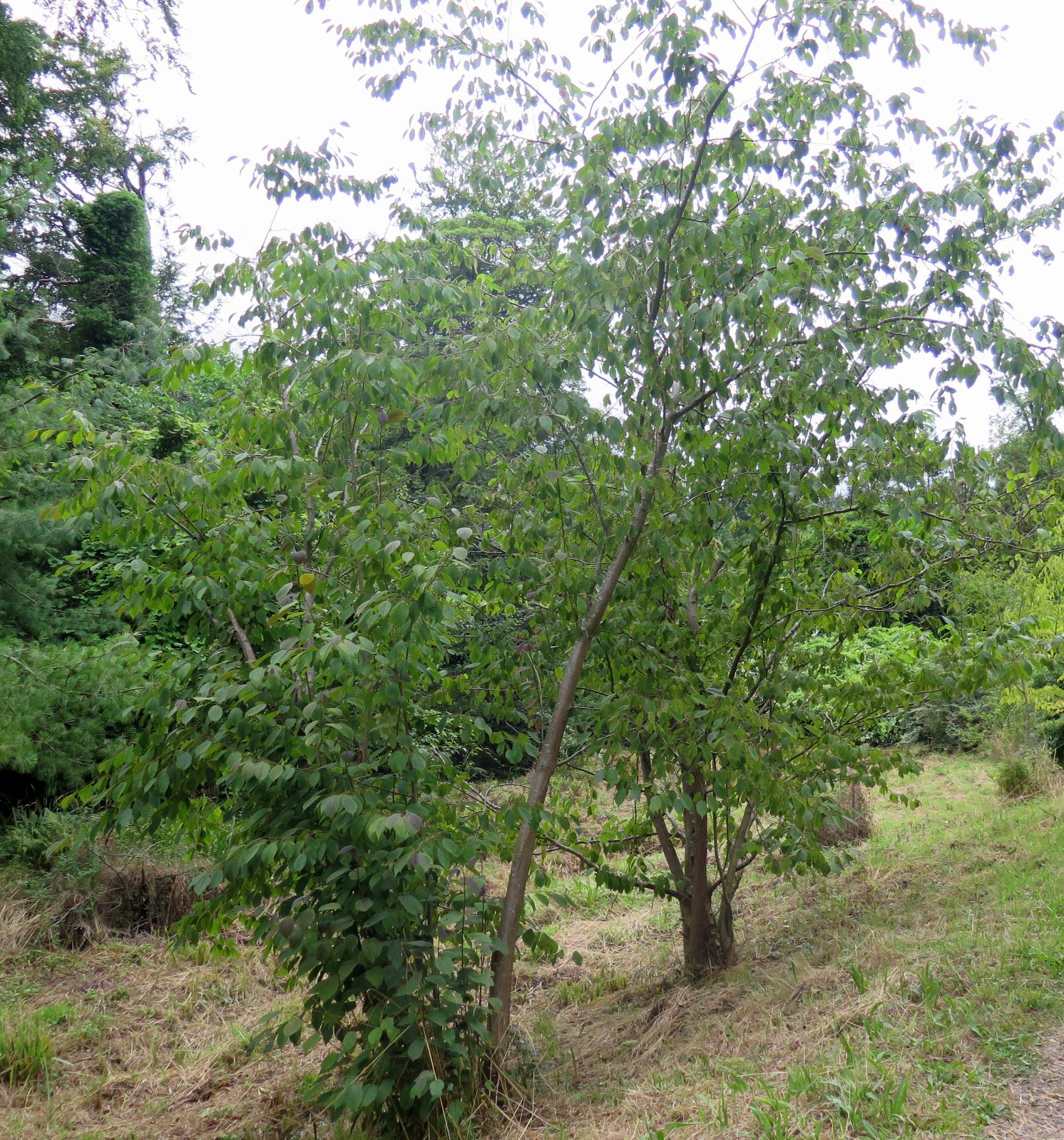Corylus ferox
Sponsor
Kindly sponsored by
Kent Men of The Trees
Credits
Owen Johnson & Richard Moore (2023)
Recommended citation
Johnson, O. & Moore, R. (2023), 'Corylus ferox' from the website Trees and Shrubs Online (treesandshrubsonline.
Genus
Common Names
- Himalayan Hazel
- 刺榛 (ci zhen)
Infraspecifics
Other taxa in genus
- Corylus americana
- Corylus americana × avellana
- Corylus avellana
- Corylus avellana × cornuta
- Corylus avellana × heterophylla
- Corylus avellana × maxima
- Corylus avellana × sieboldiana
- Corylus avellana × sutchuenensis
- Corylus Badgersett Hybrids
- Corylus chinensis
- Corylus colchica
- Corylus colurna
- Corylus × colurnoides
- Corylus cornuta
- Corylus fargesii
- Corylus 'Grand Traverse'
- Corylus heterophylla
- Corylus jacquemontii
- Corylus maxima
- Corylus 'Purple Haze'
- Corylus 'Rosita'
- Corylus 'Ruby'
- Corylus sieboldiana
- Corylus × spinescens
- Corylus sutchuenensis
- Corylus 'Te Terra Red'
- Corylus × vilmorinii
- Corylus yunnanensis
A tree to 20 m, often multi-stemmed; bark grey, fissured. Young twigs purplish brown, pubescent and sometimes with longer glandular hairs; buds with white shaggy hairs. Leaf ovate to oblong or obovate, 5–15 × 3–9 cm, margin with a double mucronate serration, base very obliquely rounded or slightly truncate, apex long acuminate, both sides downy along the veins when young; flushing reddish; lateral veins in 10–14 pairs; petiole 10–35 mm, very hairy. Nuts 4–6 in a cluster, small (10–15 mm wide), spiny at the top, in husks which are densely pubescent, tipped with many spines angled all ways, red ripening whitish. Flowers May–July (in situ); fruits July–September. (Li & Skvortsov 1999; Royal Botanic Garden Edinburgh 2014).
Distribution Bhutan Myanmar Mountains in the north. China Guizhou (Fanjing Shan), SW Sichuan, NW and W Yunnan. India In the eastern Himalaya. Nepal
Habitat Mountain forests, to 3800 m.
USDA Hardiness Zone 7
RHS Hardiness Rating H5
Conservation status Least concern (LC)
Phylogenetic studies suggest that Corylus ferox occupies a position not far from the ancestral root of the genus (Zhao et al. 2020). A casual observer might sense as much: here is a distinctive tree, but one whose graceful habit and rather slender, long-pointed leaves, flushing a delicate red and margined with fine whisker-tipped teeth, might suggest some general kind of Betulaceae rather than a hazel in particular; the nuts’ spiny husks, unique in Corylus, recall a more distantly related group, the sweet chestnuts (Castanea), except that they are smaller and a shocking crimson, ripening blonde. The male catkins in spring are pinkish, rather than yellow as in most hazels. C. ferox is so distinctive, in fact, that Nathaniel Wallich’s original name from 1830 (‘bristling hazel’) has never been challenged by subsequent botanists; the only modification has been the addition of var. tibetica (Batalin) Franch., a plant differing very subtly in its glabrous buds and shorter-pointed leaves with slightly fewer pairs of veins (8–12 cf. 10–14). The more easterly distribution of var. tibetica makes it a Chinese endemic (Li & Skvortsov 1999).
Var. tibetica reached the west in the last years of the nineteenth century, but var. ferox itself had to wait until the second golden age of plant-hunting in the later decades of the twentieth. Since then there have been a number of introductions to the UK, the first by Len Beer from Nepal (Edwards & Marshall 2019; Clarke 1988). To date, the species remains a bush in cultivation, rather than the 20 m tree described from the wild: the tallest (7 m) grows in woodland shelter at Wakehurst Place and was accessioned in 1978 from Schilling 2338. Other collections include EMAK 733 at the Royal Botanic Garden Edinburgh, SICH 962 at Howick Hall, and KR 7651 at Ness Botanic Gardens and the Yorkshire Arboretum (Tree Register 2023). GWJ 9293 is offered by Crûg Farm (Crûg Farm Plants 2023), while Pépinière AOBA in France offers plants from seed collected in Sichuan Province (Pépinière AOBA 2023).
Corylus ferox is hardy enough to survive at the University of Oslo Botanical Garden (University of Oslo Botanical Garden 2023). Given the range of material now growing in Europe, the lack of evidence for the cultivation of such an elegant and fascinating plant anywhere in North America seems strange.
var. tibetica (Batalin) Franchet
Common Names
Tibetan Hazel
藏刺榛 (zang ci zhen)
Synonyms
Corylus tibetica Batalin
Differing from the type in its glabrous buds, obovate to elliptic leaves with shorter points and fewer (8–12) pairs of lateral veins (Li & Skvortsov 1999).
Distribution
- China – SE Gansu, Guizhou, W Hubei, Ningxia, Shaanxi, E Sichuan, Tibet, Xizang, Yunnan.
RHS Hardiness Rating: H6
USDA Hardiness Zone: 6
Although described originally as a new species by Alexander Batalin in 1893, Corylus ferox var. tibetica differs so subtly from var. ferox that the varietal status recommended by Plants of the World Online (Royal Botanic Gardens, Kew 2023) is accepted by nearly all contemporary botanists.
In cultivation in the west, this variety has become the main representative for Corylus ferox, particularly in North America, although the slender, long-tipped leaf of var. ferox is perhaps more eye-catching. Tibetan Hazel was introduced to Maurice de Vilmorin’s nursery in France in 1898, and to England by Ernest Wilson in 1901 (Bean 1981). Two straight-stemmed trees in the National Botanic Garden, Glasnevin, Ireland, were 19 m × 44 cm dbh and 16 m × 39 cm dbh in 2012 (Tree Register 2023; Bean 1981) and have always been accepted as genuine, though several other specimens in the hazel collection here are clearly mislabelled. The variety has also grown at the Linnaeus Garden, Uppsala, Sweden, since 1944 (Royal Botanic Garden Edinburgh 2023). There have been several more recent reintroductions, including SICH 1455 (8 m at Howick Hall by 2019), CEE 106 (4 m at Dawyck Botanic Garden by 2014), and the unconfirmed CLD 1448 from Yunnan, at the Yorkshire Arboretum (Tree Register 2023). This high-altitude plant is hardy enough to be grown at the Arboretum Norr in Sweden, ‘the northernmost arboretum in the world’ (Arboretum Norr 2023). In 2023, Tibetan Hazel was offered by Pan Global Plants in the UK and by Pèpinière des Avettes in France (Pan-Global Plants 2023; Pépinière des Avettes 2023).
The variety is represented in the United States by a rather unpreposessing young bush at the Arnold Arboretum (113.98*A; Arnold Arboretum 2023). In North American Climate Zone 6, this plant is probably near its limit; Cecil Farris, an amateur hazelnut grower working from the 1970s onwards in Lansing, Michigan (Zone 5b) grew a few plants in pots, which he needed to overwinter in his garage (Molnar 2011). Farris did manage to hybridise Corylus ferox var. tibetica with ‘Lisa’, a complex hybrid bred for nut production (Molnar 2011), but the genes of C. ferox have not contributed to any of today’s commercial hazelnuts.

